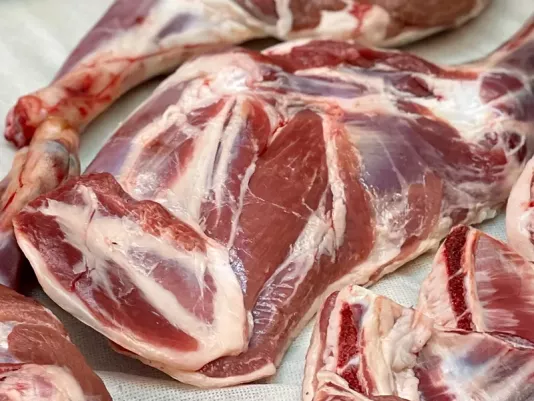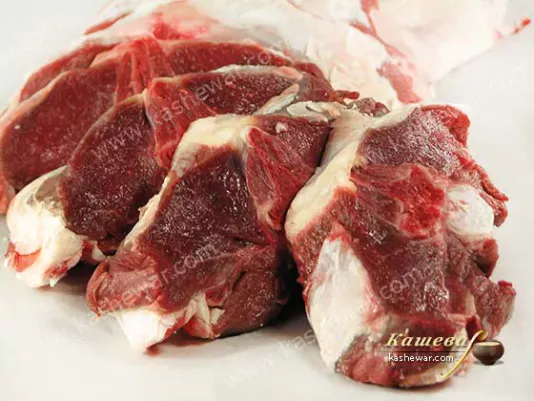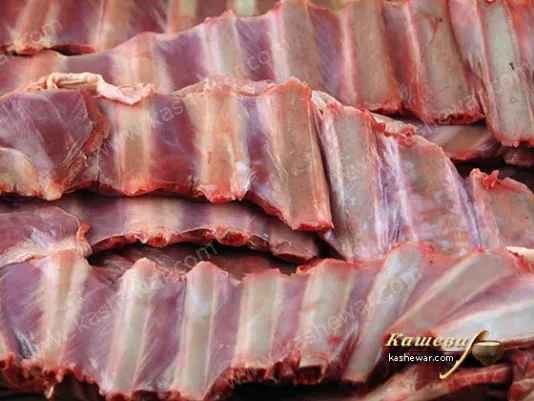Lamb and Goat Meat
Lamb and goat meat are types of meat I value for their unique flavor and health benefits. They contain high-quality protein, iron, and other essential nutrients, making dishes nutritious and balanced. I use lamb for pilaf, braised, and baked meals, while goat meat is ideal for lighter and more delicate recipes. Both pair especially well with herbs and spices, allowing me to create a rich aroma and distinctive taste. In my practice, I always choose fresh, high-quality meat, as it determines the success of the dish. For me, lamb and goat meat are not just ingredients but a way to cook meals that bring the family together and create a cozy home atmosphere.
Different Types of Lamb and Goat Meat
Lamb
For me, lamb has always been a meat with character – aromatic, flavorful, and versatile in cooking. I love using it for roasting in large cuts, as this method reveals its full flavor and keeps it tender and juicy. Lamb pairs especially well with garlic, rosemary, and cumin – spices that enhance its distinct aroma. I also often braise lamb with vegetables or prepare pilaf, as it gives the dish a deep, rich taste. In my experience, lamb is best cooked slowly and attentively, since cooking time determines its tenderness. Young lamb is more delicate, while older meat requires longer braising or marinating. For me, lamb is a festive meat even on weekdays, because every time it delivers an unforgettable taste and aroma my family loves.
Goat Meat
Goat meat has always been, to me, a tender type of meat perfectly suited for light and dietary dishes. I like using it in soups, stews, or roasting small cuts with vegetables. It is leaner than lamb, which makes meals lighter yet still filling and nutritious. I often pair goat meat with herbs such as thyme, oregano, or basil, which add a fresh aroma. In my experience, goat meat responds well to marinating: lemon juice or yogurt makes it even more tender and juicy. I also use goat meat in pilaf or braised dishes, as it absorbs spices well and pairs perfectly with grains and vegetables. For me, goat meat is an ingredient that brings new culinary nuances and helps diversify the menu while balancing richness with lightness. It always reminds me of home comfort and warm family dinners.
Cuts of Lamb
In my experience, the success of a lamb dish largely depends on choosing the right cut. For example, the shoulder is perfect for braising and flavorful stews, as the meat is tender and absorbs spices well. A leg of lamb is my festive choice: roasted in the oven with garlic and herbs, it always becomes the centerpiece of the table. Lamb ribs I like to cook on the grill or roast in the oven, resulting in juicy pieces with a distinct aroma. The neck of lamb is excellent for long braising, as the meat turns out very soft and rich. I also use lamb mince for cutlets and fillings because of its juiciness and characteristic taste. For me, each cut of lamb offers unique possibilities, and the right choice determines whether the dish will be delicate, festive, or rich and spicy.
Cuts of Goat Meat
Goat meat, like lamb, has its specific cuts, each suited for particular dishes. I enjoy using the goat shoulder for braising with vegetables, as it comes out tender and absorbs spice flavors well. The goat leg is my choice for roasting, especially on festive days when I want something light yet refined. Goat ribs are perfect for roasting or grilling since they remain juicy and aromatic. The goat neck works ideally for soups and stews, as long cooking makes the meat very soft and tender. Goat mince I often use for cutlets or pie fillings, as it combines pleasant flavor with lightness when mixed with other ingredients. In my experience, choosing the right goat cut reveals its natural tenderness and makes the dish successful. Each part of this meat has its own character, and I always take this into account when cooking.
Pairing Lamb and Goat Meat with Spices
In my culinary practice, I’ve found that spices are what make lamb and goat dishes truly special. I often use garlic, rosemary, and cumin with lamb, as they emphasize its rich flavor and add depth. For goat meat, I prefer lighter, fresher herbs – thyme, oregano, basil, or mint – which balance its tenderness beautifully. Combined with spices, lamb becomes festive and bold, while goat meat acquires new nuances while maintaining delicacy. I also often use spice blends for pilaf or stews, combining paprika, turmeric, coriander, and black pepper. These seasonings create a rich aroma and make the dish more harmonious. From my experience, marinating the meat with spices always gives the best result: lamb becomes softer, and goat meat more tender and juicy. For me, spices are the key to making any dish from these meats truly unforgettable.




